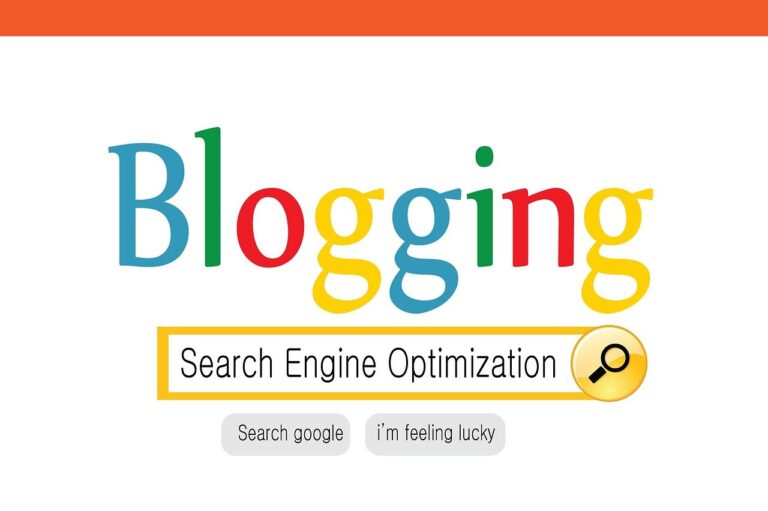Creating high-quality content that resonates with your audience is essential for holistic practitioners looking to establish their online presence and attract new clients. By crafting engaging and informative content, you can showcase your expertise and build trust with potential clients.
Developing content that speaks directly to your target audience’s needs and interests can help you stand out in the competitive holistic health field.

As a holistic practitioner, your content should reflect your unique approach to wellness while addressing common concerns and questions your audience may have. Consistently producing valuable content can position you as a trusted authority in your field, fostering loyalty among existing clients and attracting new ones.
Key Takeaways
- Tailor your content to address your audience’s specific health concerns and interests
- Share personal experiences and case studies to illustrate the effectiveness of your holistic approach
- Optimize your content for search engines to increase visibility and reach a wider audience
Understanding Your Audience
Knowing your audience is crucial for creating content that truly resonates. It allows you to tailor your message and approach to meet their specific needs and preferences.
Identifying Your Target Demographic
Start by creating detailed client personas. Consider age ranges, genders, occupations, and lifestyles of your ideal clients.
Then, research where they spend time online and what types of content they engage with most.
Use analytics tools to gather data on your website visitors and social media followers. This information can reveal valuable insights about who is already interested in your services.
Consider conducting surveys or interviews with current clients to gain a deeper understanding of their backgrounds and motivations for seeking holistic health solutions.
Analyzing Client Pain Points
Next, identify the common health issues or wellness challenges your target audience faces. Listen to their concerns during consultations and pay attention to frequently asked questions.
Create a list of these pain points and prioritize them based on frequency and severity. This will help you focus your content on addressing the most pressing issues.
Engage with your audience on social media platforms to uncover additional concerns they may not express during in-person interactions. Monitoring relevant online forums can also provide valuable insights into your audience’s struggles.
Understanding Client Needs and Preferences
Finally, determine what types of holistic health solutions your audience is most interested in. Are they looking for natural remedies, stress reduction techniques, or lifestyle changes?
Then, craft content that aligns with their preferred learning styles. Some may prefer detailed written explanations, while others respond better to visual aids or video demonstrations.
Consider the level of knowledge your audience has about holistic health practices. Adjust your content’s complexity accordingly, ensuring it’s accessible yet informative for your target demographic.
Pay attention to the language and terminology your clients use. Incorporate these phrases into your content to create a stronger connection and improve relatability.
Developing A Unique Voice

Creating a distinctive brand voice helps holistic practitioners stand out and connect with their audience. A well-crafted voice reflects your values, expertise, and personality.
Defining Your Brand Voice
Start by identifying your core values and mission. What sets you apart from other practitioners? Consider your target audience and their needs. Then, focus on principles and messaging that align with your practice.
Create a list of adjectives that describe your ideal brand voice. Examples might include:
- Compassionate
- Knowledgeable
- Empowering
- Calm
Use these words to guide your content creation. Develop a style guide that outlines your brand’s tone, vocabulary, and key messages.
Consistency Across Platforms
Maintain a consistent voice across all communication channels. This includes your website, social media, emails, and in-person interactions.
Leverage your unique selling proposition in every piece of content you create.
Use similar language and tone whether you’re writing a blog post or responding to a client inquiry. This consistency builds trust and reinforces your brand identity.
Consider creating templates for common communications to ensure coherence. Then, regularly review your content to ensure it aligns with your established voice.
Balancing Professionalism and Approachability
As a holistic practitioner, you need to strike a balance between expertise and relatability. Use clear, jargon-free language to explain complex concepts. Avoid overly technical terms that might alienate your audience.
Share personal anecdotes or experiences to make your content more engaging. This helps build a connection with your readers while maintaining your professional image.
Use a warm, conversational tone in your writing. Address your audience directly, using “you” and “your” to create a sense of personal connection. Ask questions to encourage engagement and show that you value your readers’ perspectives.
Identifying Key Topics Of Interest

Discovering relevant topics is crucial for creating content that resonates with your audience. By focusing on subjects that matter to your clients, you’ll establish yourself as a trusted resource in the holistic health field.
Conducting Audience Research
Start by creating a detailed profile of your target audience. Consider factors like age, gender, occupation, and health concerns. Then, use online surveys or social media polls to gather direct feedback.
Next, analyze your website analytics to see which pages and topics attract the most traffic. This data can reveal what information your audience seeks most frequently.
Join online forums and social media groups related to holistic health. Pay attention to common questions and discussions. These platforms offer valuable insights into your audience’s interests and pain points.
Leveraging Industry Trends
Stay informed about current trends in holistic health. Subscribe to industry publications, attend conferences, and follow thought leaders on social media.
Use tools like Google Trends to identify rising search terms in your field. This can help you create timely content that aligns with growing interests.
Consider seasonal trends in health and wellness. For example, immune-boosting topics may be more relevant during flu season, while stress management might be in demand during busy holiday periods.
Utilizing Client Feedback
Encourage clients to share their experiences and questions. Create a system for collecting and organizing this feedback, such as a simple spreadsheet or customer relationship management (CRM) tool.
Then, analyze common themes in client inquiries. If multiple clients ask about a specific treatment or health concern, it’s likely a topic worth addressing in your content.
Consider conducting brief exit interviews or sending follow-up emails after appointments. Ask clients what information they found most valuable and what they’d like to learn more about.
Use this feedback to create a list of frequently asked questions (FAQs). These questions can serve as excellent starting points for blog posts, videos, or social media content.
Crafting Engaging Narratives
Engaging narratives captivate your audience and make your content memorable. By mastering storytelling techniques, structuring your content effectively, and incorporating visuals, you can create compelling narratives that resonate with your readers.
Storytelling Techniques
Start with a strong hook to grab your audience’s attention. Use emotion to connect with your readers on a deeper level. Then, develop relatable characters or scenarios that your audience can identify with.
Incorporate conflict and resolution to maintain interest. Build tension and create anticipation to keep readers engaged throughout your narrative.
Use vivid descriptions and sensory details to bring your story to life. Show, don’t tell – let your readers experience the narrative through rich, immersive language.
Employ dialogue to add authenticity and reveal character personalities. Balance narration with dialogue to create a dynamic rhythm in your storytelling.
Structuring Your Content
Begin with a clear introduction that sets the stage for your narrative. Outline the main points or themes you’ll cover to give readers a roadmap.
Then, use short paragraphs and varied sentence lengths to maintain a good flow. Break up text with subheadings, bullet points, or numbered lists for easy scanning.
Create a logical progression of ideas, building towards a climax or key message. Use transitional phrases to guide readers smoothly from one point to the next.
End with a strong conclusion that reinforces your main message and leaves a lasting impression. Consider including a call-to-action or thought-provoking question to encourage reader engagement.
Using Visuals and Multimedia
Incorporate relevant images, infographics, or charts to illustrate key points. Choose visuals that complement your narrative and enhance understanding.
Use video content to demonstrate techniques or share personal stories. Short, well-produced videos can significantly boost engagement and retention.
Consider creating interactive elements like quizzes or polls to involve your audience actively. These can make your content more memorable and shareable.
Optimize your visuals for different platforms and devices. Ensure images and videos load quickly and display correctly on mobile devices.
Include alt text for images to improve accessibility and SEO. Caption videos to make them accessible to a wider audience and improve comprehension.
Showcasing Expertise

Establishing your credibility as a holistic practitioner is crucial for attracting and retaining clients. By effectively highlighting your qualifications, incorporating scientific evidence, and addressing misconceptions, you can build trust and demonstrate your expertise.
Highlighting Qualifications and Experience
Your qualifications and experience are key factors in establishing credibility. List your relevant degrees, certifications, and training programs. Include the institutions you attended and any notable instructors or mentors.
Highlight your years of practice and areas of specialization. Mention any awards, publications, or speaking engagements that showcase your expertise.
Create a professional bio that succinctly outlines your background and philosophy. Include this on your website and marketing materials.
Consider creating a “Meet the Practitioner” video to personally introduce yourself and your approach to potential clients.
Incorporating Scientific Evidence
Back up your holistic practices with scientific research to enhance credibility. Stay updated on the latest studies in your field and reference them in your content.
Cite reputable sources when discussing the benefits of specific treatments or techniques. Then, use data and statistics to support your claims and provide context for your readers.
Create infographics or short videos explaining complex scientific concepts in simple terms. This helps your audience understand the evidence behind your methods.
Consider collaborating with researchers or participating in studies related to your practice. Then, share any findings or insights gained from these experiences.
Addressing Common Misconceptions
Proactively tackle misconceptions about holistic health practices to build trust. Identify common myths or misunderstandings in your field and address them directly.
Explain the science behind holistic approaches and how they complement conventional medicine. Use clear, jargon-free language to make your explanations accessible.
Share case studies or success stories that demonstrate the effectiveness of your methods. Be honest about what holistic practices can and cannot achieve.
Create a FAQ section on your website to address common concerns. Update this regularly based on questions you receive from clients or potential clients.
Offer free educational resources or workshops to help dispel myths and educate your audience about holistic health practices.
Integrating Personal Experiences And Case Studies
Personal stories, client testimonials, and case studies add authenticity and relatability to your content. These elements help build trust with your audience and demonstrate the real-world impact of your holistic practices.
Sharing Personal Stories
Personal anecdotes can make your content more engaging and relatable.
Share your own journey in holistic health, including challenges you’ve overcome and lessons learned. Be vulnerable and honest about your experiences.
Highlight specific moments that led you to pursue holistic practices. Describe how these practices have improved your life and well-being.
Use vivid language to paint a picture for your readers. For example, describe how you felt before and after implementing certain techniques or treatments.
Remember to tie your personal stories back to the benefits your clients can experience. This connection helps readers see themselves in your narrative and understand how your services can help them.
Utilizing Client Testimonials
Client testimonials provide social proof and build credibility for your practice. Ask satisfied clients for permission to share their experiences.
Use a variety of formats to present testimonials:
- Short quotes
- Video testimonials
- Before-and-after photos (with consent)
- Written success stories
Choose testimonials that highlight different aspects of your services. Include specific details about the client’s journey, challenges, and results.
Ensure testimonials are authentic and represent a diverse range of clients. This approach helps potential clients see themselves reflected in your success stories.
Presenting Case Studies
Case studies offer in-depth looks at how your holistic practices have helped specific clients. They provide concrete examples of your methods and results.
Structure your case studies with these elements:
- Client background and initial challenges
- Your assessment and proposed treatment plan
- The holistic methods you applied
- Outcomes and improvements
Use data and measurable results when possible. For example, include improvements in sleep quality, stress levels, or specific health markers.
Protect client privacy by using pseudonyms or getting explicit permission to share details. Focus on the process and results rather than sensitive personal information.
Create content that resonates by showing how your approach addresses common concerns and produces real-world benefits for your clients.
Building Trust And Credibility

Establishing trust and credibility is crucial for holistic practitioners to connect with their audience and build lasting relationships.
Transparent Communication
Be open and honest in your content creation. Share your qualifications, experience, and any relevant certifications. Discuss your approach to holistic practice and explain the methodologies you use.
Craft a holistic content roadmap aligned with your business goals and target audience’s interests. This helps maintain consistency in your messaging.
When presenting information, incorporate data and statistics to support your claims. This adds credibility to your content and demonstrates your commitment to evidence-based practices.
Ethical Content Practices
Adhere to ethical guidelines in your content creation. Always provide accurate information and avoid making exaggerated claims about treatments or outcomes.
Clearly distinguish between fact and opinion in your content. When discussing research or studies, provide proper citations and links to reputable sources.
Respect client confidentiality. If sharing case studies or success stories, obtain proper consent and anonymize personal information.
Disclose any potential conflicts of interest, such as affiliate partnerships or sponsored content. Transparency in these areas helps maintain trust with your audience.
Engaging With Your Audience
Encourage engagement with your content by inviting questions and feedback. Respond promptly and thoughtfully to comments and inquiries.
Create interactive content such as quizzes, polls, or live Q&A sessions. This fosters a sense of community and allows you to address your audience’s specific concerns.
Share personal anecdotes and experiences when appropriate. This helps establish an emotional connection with your audience and makes your content more relatable.
Regularly update your content to reflect new developments in your field. This demonstrates your commitment to ongoing education and staying current in your practice.
Optimizing For Search Engines

Effective search engine optimization helps holistic practitioners attract more clients online. By focusing on targeted keywords, on-page techniques, and strategic content promotion, you can improve your visibility in search results.
Keyword Research
Start by identifying relevant keywords for your holistic practice. Use tools like Google Keyword Planner or SEMrush to find terms your potential clients are searching for.
Focus on long-tail keywords that are specific to your services, such as “natural migraine relief techniques” or “holistic anxiety management.”
Create a list of primary and secondary keywords. Include location-based terms if you serve a specific area. Prioritize keywords with moderate search volume and low competition.
Analyze your competitors’ keywords to uncover opportunities. Look for gaps in their content that you can fill with your expertise.
On-Page SEO Techniques
Optimize your website’s content using your chosen keywords. Place your primary keyword in the title tag, meta description, and H1 heading of each page. Use secondary keywords naturally throughout your content.
Improve your site’s structure with clear, descriptive URLs. For example:
- yourdomain.com/services/acupuncture
- yourdomain.com/blog/benefits-of-meditation
Use internal linking to connect related pages on your site. This helps search engines understand your content’s structure and relevance.
Optimize images by using descriptive file names and alt text. This improves accessibility and provides context for search engines.
Content Promotion Strategies
Create high-quality content that addresses your clients’ needs and showcases your expertise. Develop a content calendar to maintain consistency in your publishing schedule.
Leverage social media platforms to share your content. Choose platforms where your target audience is most active, such as Instagram for visual content or LinkedIn for professional networking.
Consider guest posting on reputable health and wellness websites. This can help you build backlinks and expand your reach.
Engage with your audience through comments and social media interactions. Responding to questions and feedback can boost your credibility and encourage sharing of your content.
Conclusion

Creating high-quality content is essential for holistic practitioners to connect with their audience. By focusing on valuable, engaging information, you can establish yourself as a trusted expert in your field.
Remember to tailor your content to your target audience’s needs and interests. Use a mix of formats, such as blog posts, videos, and infographics, to keep your content fresh and appealing.
Consistency is key. Develop a content calendar to maintain a regular posting schedule. This helps build anticipation and keeps your audience coming back for more.
Craft compelling content that resonates with your readers by addressing their pain points and offering practical solutions. Share personal experiences and case studies to add authenticity to your message.
Don’t forget to optimize your content for search engines. Use relevant keywords naturally throughout your posts to improve visibility and attract new clients.
Engage with your audience by responding to comments and encouraging discussions. This fosters a sense of community and builds trust in your expertise.
Frequently Asked Questions

Holistic practitioners face unique challenges in creating content that resonates with their audience. These questions address key concerns about integrating expertise, storytelling, trends, audience segmentation, content updates, and multimedia use in holistic wellness content creation.
How can holistic practitioners effectively integrate their expertise into engaging content?
Integrate your expertise by focusing on practical, actionable advice. Share specific techniques or remedies you’ve found effective in your practice.
Use case studies to illustrate how your methods have helped real clients. This establishes you as a trusted authority in your field.
What storytelling techniques enhance client engagement with wellness content?
Use personal anecdotes to connect with your audience emotionally. Share your own wellness journey or transformations you’ve witnessed in clients.
Craft narratives that highlight the benefits of holistic approaches. Paint a vivid picture of life before and after implementing your recommended practices.
In what ways can practitioners ensure their content reflects the latest holistic wellness trends?
Stay informed by regularly attending conferences and workshops in your field. Subscribe to reputable holistic health journals and newsletters.
Engage with your professional network to discuss emerging trends. Incorporate new research and techniques into your content to demonstrate your up-to-date knowledge.
What are the best practices for tailoring content to different audience segments within the holistic community?
Identify distinct segments within your audience, such as beginners, advanced practitioners, or those with specific health concerns. Create content that addresses the unique needs of each group.
Use surveys and social media polls to understand your audience’s preferences. Tailor your language and examples to resonate with each segment’s level of expertise and interests.
How often should holistic practitioners update their content to maintain audience interest?
Aim to update your core content at least quarterly. This ensures your information remains current and relevant.
Publish new blog posts or articles weekly or bi-weekly to maintain a consistent presence. Regular updates signal to your audience that you’re actively engaged in your field.
What role does multimedia play in creating compelling content for a holistic wellness audience?
Incorporate various media types to cater to different learning styles.
Use videos to demonstrate techniques or guided meditations.
Create infographics to simplify complex wellness concepts.
Podcasts can be an effective way to share in-depth discussions on holistic health topics.






